Science
VCU Physicists Discover Theoretical Possibility of Large, Hollow Magnetic Cage Molecules: New molecules could be larger than the original Buckminster fullerene with potential applications in technology and health care
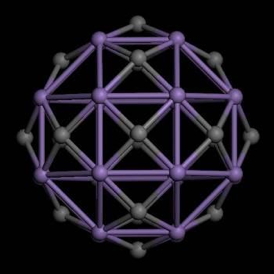
Illustration depicts a Mn24C18 cluster carrying a magnetic moment of 70 Bohr magnetons.
- Read more
- 373 reads
Tiny, brightly shining silicon crystals could be safe for deep-tissue imaging: In a new study, the crystals had no toxic effects in non-human primates
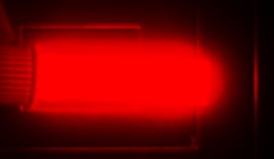
Bright light emission from silicon quantum dots in a cuvette. The image is from a camera that captures the near-infrared light that the quantum dots emit. The light emission shown is a psuedo color, as near-infrared light does not fall in the visible spectrum.
- Read more
- 512 reads
Tetrapod Quantum Dots Light the Way to Stronger Polymers: Berkeley Lab Researchers Use Fluorescent Tetrapod Quantum Dots to Measure the Mechanical Strength of Polymer Fibers
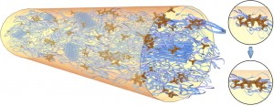
Fluorescent tetrapod quantum dots or tQDs (brown) serve as stress probes that allow precise measurement of polymer fiber tensile strength with minimal impact on mechanical properties. Inserts show relaxed tQDs (upper) and stressed tQDs (lower).
- Read more
- 368 reads
Novel Nanostructures Synthesized to Adsorb Toxic Ions from Polluted Water
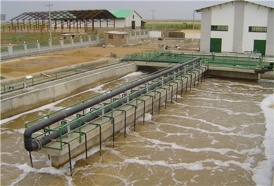
- Read more
- 365 reads
Elementary Physics in a Single Molecule

The molecule of about 2 nm in size is kept stable between two metal electrodes for several days.
- Read more
- 373 reads
NASA's WISE Finds Mysterious Centaurs May Be Comets

New observations from NASA's NEOWISE project reveal the hidden nature of centaurs, objects in our solar system that have confounded astronomers for resembling both asteroids and comets. The centaurs, which orbit between Jupiter and Neptune, were named after the mythical half-horse, half-human creatures called centaurs due to their dual nature. This artist's concept shows a centaur creature together with asteroids on the left and comets at right.
- Read more
- 314 reads
ALMA Sheds Light on Mystery of Missing Massive Galaxies

New observations from the ALMA telescope in Chile have given astronomers the best view yet of how vigorous star formation can blast gas out of a galaxy and starve future generations of stars of the fuel they need to form and grow. The dramatic images show enormous outflows of molecular gas ejected by star-forming regions in the nearby Sculptor Galaxy. These new results help to explain the strange paucity of very massive galaxies in the Universe.
- Read more
- 283 reads
Tropical Ecosystems Boost Carbon Dioxide as Temperatures Rise

Above image was made with the satellite instrument MODIS (or Moderate Resolution Imaging Spectroradiometer) data. It is a key instrument aboard the Terra (EOS AM) and Aqua (EOS PM) satellites.
- Read more
- 353 reads
UCSB study reveals mechanism behind squids' and octopuses' ability to change color
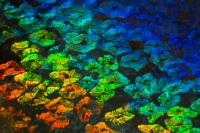
This shows the diffusion of the neurotransmitter applied to squid skin at upper right, which induces a wave of iridescence traveling to the lower left and progressing from red to blue. Each object in the image is a living cell, 10 microns long; the dark object in the center of each cell is the cell nucleus.
- Read more
- 308 reads
Human Rights
Fostering a More Humane World: The 28th Eurasian Economic Summi

Conscience, Hope, and Action: Keys to Global Peace and Sustainability

Ringing FOWPAL’s Peace Bell for the World:Nobel Peace Prize Laureates’ Visions and Actions

Protecting the World’s Cultural Diversity for a Sustainable Future

Puppet Show I International Friendship Day 2020


